Fifty years ago this weekend the iconic Porsche 917 sports racer gave the Stuttgart manufacturer its maiden overall victory at the 24 Hours of Le Mans, a significant milestone of its two years of nearly complete domination of international endurance racing.
The Porsche 917’s debut at Le Mans the previous year was high on expectation, but yielded little in terms of results. Three Porsche 917s took the French drapeau tricolore in 1969; two entered by the Porsche factory and a single private entry from English gentleman racer John Woolfe.
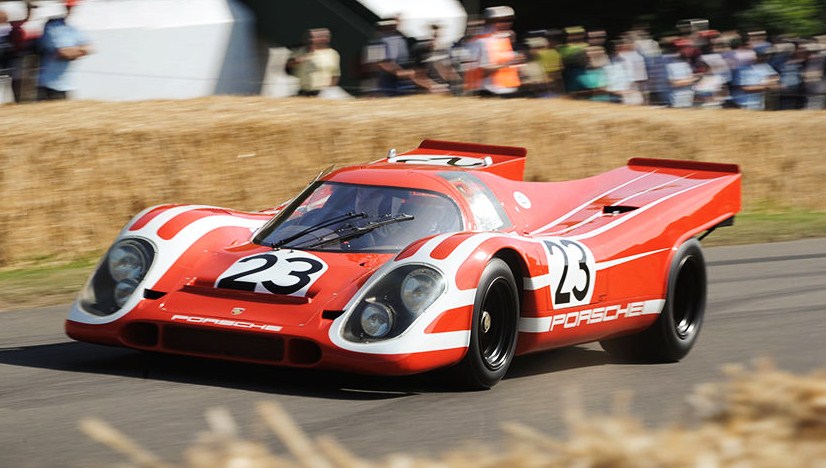
Much was expected from these three cars as one was the fastest qualifier. The race started badly as three-quarters the way around the first lap tragedy struck. Woolfe’s car left the road, struck a barrier, and the owner/driver was killed. Neither of the two remaining 917s finished the race, both succumbing to clutch problems, but not before setting the race’s fastest lap. The race was won by the older, heavier, less-powerful and less-sophisticated Gulf-sponsored, John Wyer Automotive-entered Ford GT40 followed by a smaller 3.0 liter Porsche 908 a very close second. The race is not always to the swift.
Porsche, though, made up plenty of ground, winning the French classic and the World Sportscar Championship two years running, through the end of the 917’s eligibility in 1971. These victories help set Porsche on the course of upgrading its image from that of a maker of small, nimble sports cars to its present status as a technical giant in the automotive industry. That a motion picture starring Steve McQueen based a fictitious version of the 1970 Le Mans race certainly helped the image of Porsche and the legend of the 917.
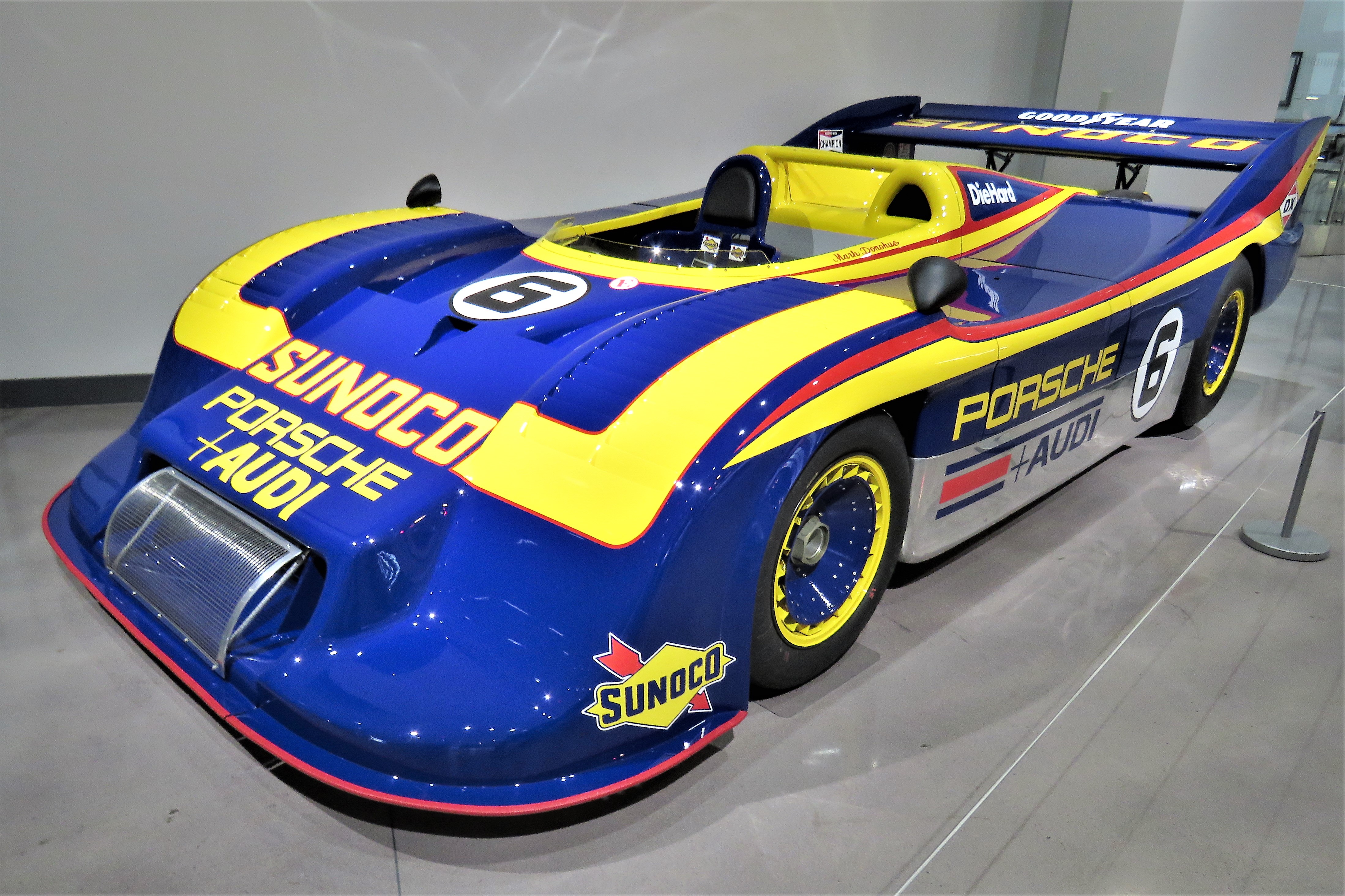
While it seems extraordinary now that the 917 wasn’t predestined to appear, shifting the balance of power within motorsports from regulating body to manufacturer, it was as much pragmatism as inspiration that lead to the development of the iconic, dominating sports race car.
The primary motivator for the existence of the 917 was the 1968 decision by the Commission Sportive Internationale (the arm of the Federation Internationale de L’Automobile that then governed motorsports) to reduce the number of vehicles it required to be produced in order for a model to be eligible for the Group 4 sports car category.

Originally the bar had been set at 50 examples required, which was subsequently reduced to 25 cars. It has been speculated that the decision was made to open the field to the Lola T-70 and perhaps even the McLaren M6GT coupes, allowing gentleman racers to enter long-distance races with more modern cars than the aging Fords and Ferraris then eligible. These Group 4 cars – as they were not expected to be competitive with the 3.0-liter purebred factory-entered Group 6 sports-prototype cars – were allowed to run larger 5.0-liter engine.
As increased participation from manufacturers was expected in the 3.0 liter class over the next few years, the CSI set the rule that the allowance for 5.0 liter cars would automatically expire after the 1971 season. This contradicts the claims of many that the 917 was “outlawed.” In fact, the expiration of the Group 4 category was predetermined before the first 917 was wheeled out of the shop.

Porsche had been competing at Le Mans for 20 years, but in smaller displacement classes where there was little chance of winning overall. That changed with the new Group 6 regulations that came into force for 1968. Porsche developed the 3.0-liter 8-cylinder 908 to challenge for overall victory, but do so, they needed to move quickly. The 908 engine was limited to about 350 HP due to its air-cooled design, some 50 to 100 HP less than what the 3.0-liter water-cooled race engines could then achieve. Ferrari had taken a break from endurance racing and Alfa-Romeo and the French Matra team was just gearing up, so there was a window of opportunity in those first years of the category.
However in 1968, a Group 6 Porsche 908 lost Le Mans to an older Group 4 Ford GT40, and a loss to the same car again in 1969 was surely viewed as justification of their decision to pursue the 917 project.
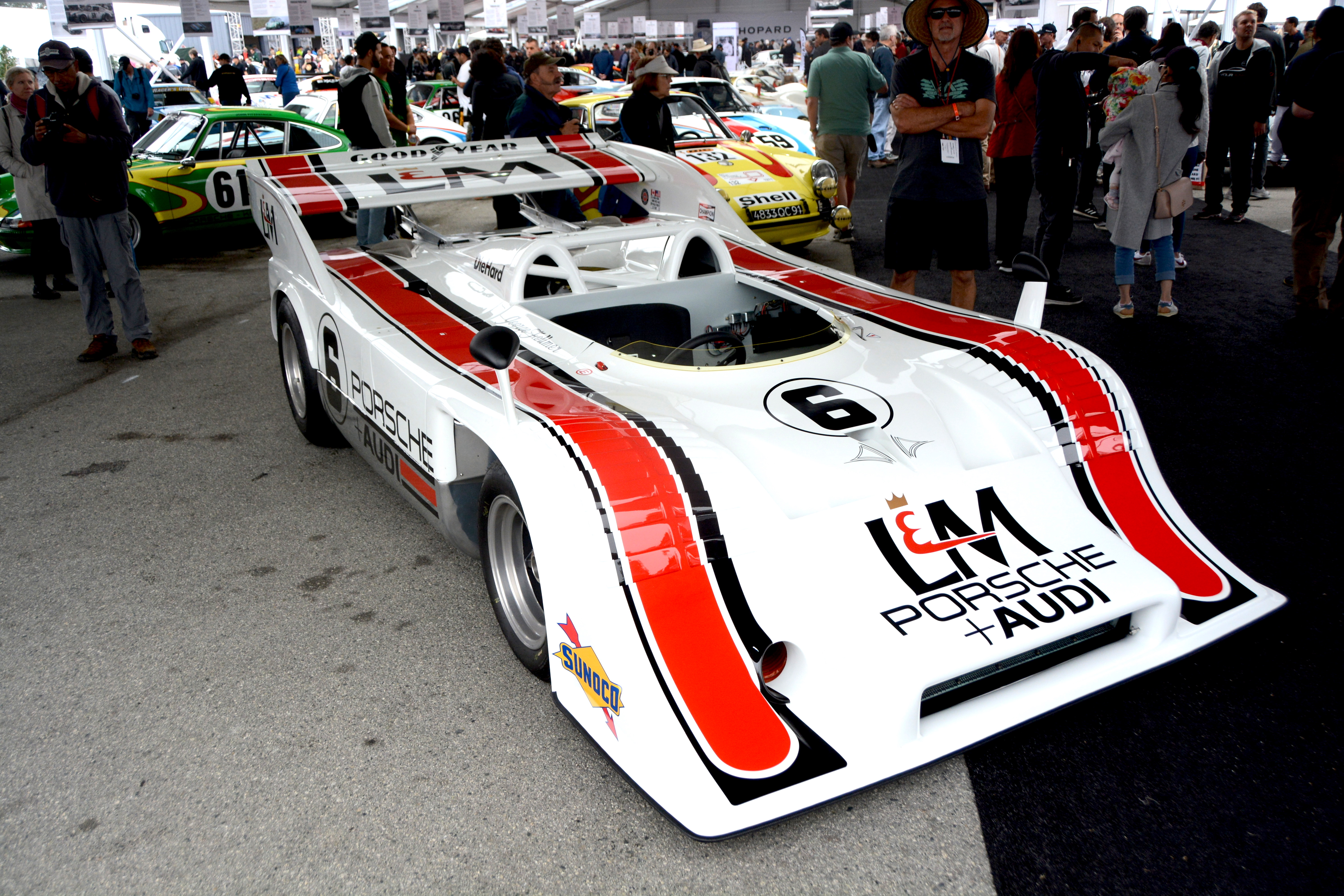
While from our perspective, five decades later, it seems perfectly natural for Porsche to jump through this loophole and develop a brand-new car around these rules. At the time, though, it was an extraordinary piece of lateral thinking as well as an incredible leap of faith for an organization that was much smaller, with far fewer resources, than the Porsche of today.
Unquestionably, it was a risky and daring move, one which has led some observers to speculate that Porsche could not have achieved the results solely with their own financial resources. To this day, there are rumors that either Volkswagen or the West German government helped fund the development of the 12-cylinder Type 912 engine used in the 917.
The Type 912 engine was based on a range of racing engines Porsche had been developing over the past few seasons in both six-cylinder and eight-cylinder configurations. Porsche very much wanted to keep knowledge of this new race car from its competitors and the rules makers as long as it could, so secrecy on this program was paramount. It didn’t hurt that the project number assigned to the 12-cylinder engine was the same as the model number of the four-cylinder version of the 911 road car.
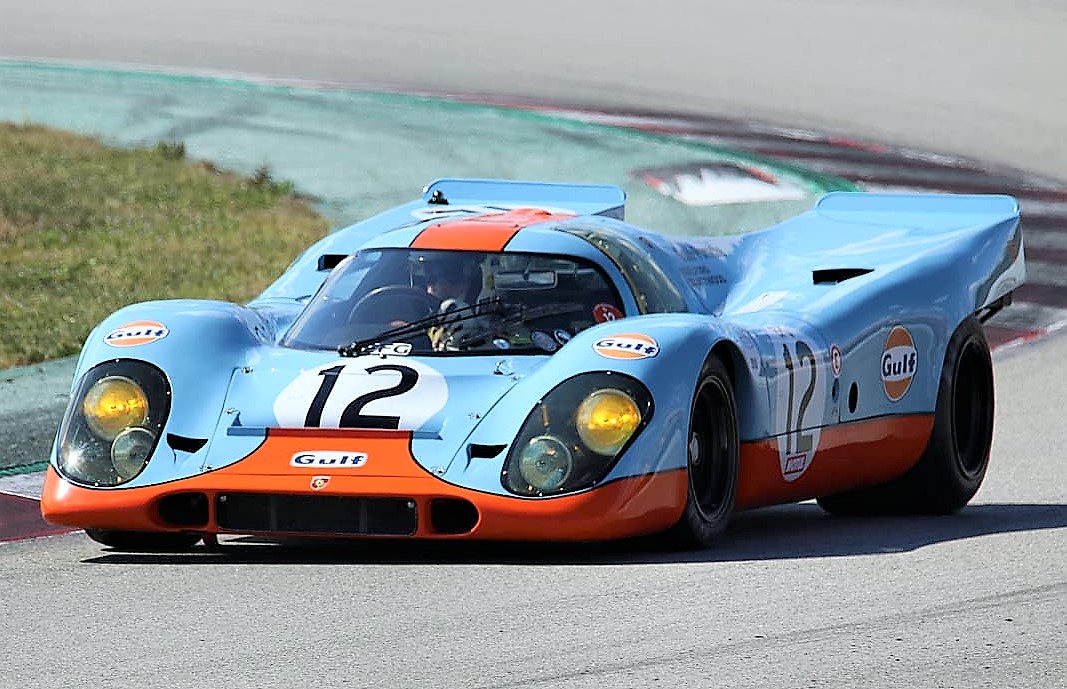
The greatest difference between the smaller engines and the Type 912 was that the six- and eight-cylinder motors took their drive off the end of the crankshaft. The crankshaft of the Type 912 was too long — due to the bore spacing required with an air-cooled engine — to utilize that standard configuration. Instead drive was taken from a set of gears at the middle of the crankshaft and transferred rearward to the clutch and transmission via a layshaft (as seem in the unraced Coventry Climax flat 16-cylinder Formula 1 engine of 1965 and several fighter plane engines in WWII).
The Type 912 engine originally displaced 4.5 liters (using the same bore and stroke as the eight-cylinder 908 engine) and was eventually enlarged to 4.9 liters and then again to the full 5.0-liter class limit.
It had been Porsche factory policy in years prior to race only new chassis, selling the “used” cars off to private owners. Porsche reasoned that for the same amount of effort required to strip and repair a car after an endurance race, the company could build a new car from scratch. In addition, selling off successful, slightly-used factory racecars generated revenue for the motorsports department. For example, Porsche had constructed 31 908 chassis in 1968 and 1969. As they knew they would build at least 25 917 chassis for competition, so it was decided to build all at once and gain eligibility to the larger-displacement category.

Porsche based the 917 chassis on the 908 design, retaining the company’s standard 2300 mm wheelbase, but moving the driver forward in the chassis to make room for the longer engine. Significant development was also directed on improving the brakes, in light of the fact that the first version of the 917 was already 30 percent more powerful than the 908.
While the 917 was blindingly fast in its debut season, drivers complained about the skittishness of the car at speed. In an effort to chase top speed through the lowest possible Coefficient of Drag (Cd) Porsche made little concession to generating aerodynamic downforce. While some of the factory drivers refused the 917 at various times during the 1969 season, others relished the challenge of taming this powerful beast. Brave men indeed.
After the John Wyer Automotive Gulf (JWA Gulf) team defeated Porsche at Le Mans in 1969 with the blunt GT40, the Porsche factory signed the JWA Gulf team to take over the 917 race program while the factory concentrated on development. As a back-up, a Porsche Salzburg team, entered by the Austrian Porsche distributorship owned by the Porsche family, was operated from the Porsche Motorsports facility in 1970, replaced by Martini Racing under the same arrangement in 1971.
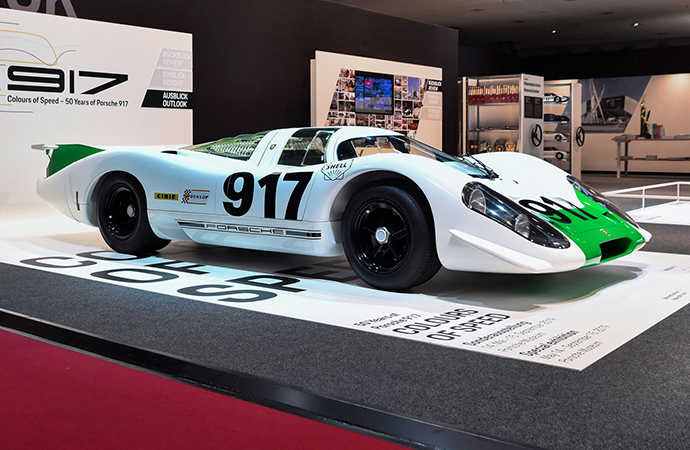
This created an environment where the 917 was quickly honed into a fierce competitor that steamrolled all comers through the 1970 and 1971 seasons. The high 917K (kurz or short tail), the one most often pictured on the car, resulted from this internal competition. The new bodywork generated downforce at the rear of the car and cured the ugly habit of the back of the car wanting to lift up off the road at high speed.
There’s an old saying about success having many fathers, and it couldn’t be more the case with the 917K tail section. There are several versions of the story of the development of the “kurz” bodywork, from different participants, all telling their own version of who was responsible for this important development.
So the Porsche 917 won the 24 Hour of Le Mans twice (contrary to the film Le Mans and popular perception, neither of which was a JWA Gulf car) as well as 9 out of 10 World Sportscar Championship endurance races held in 1970 and 8 out of 11 races in 1971 (two races of which there were no factory-supported 917 entries).
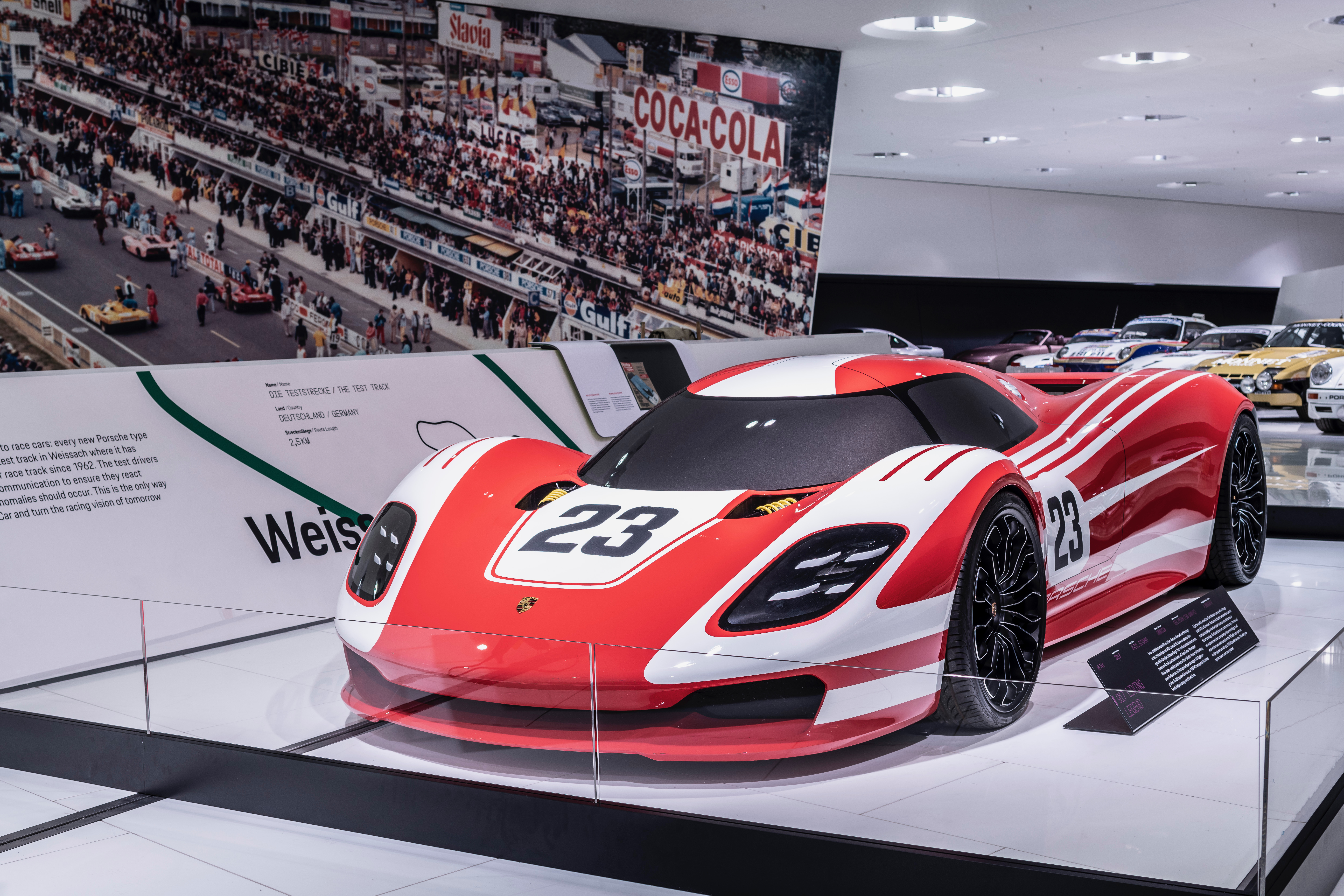
Only once was the 917 bested by a Ferrari 512, the model created by the Italian manufacturer to take advantage of the Group 4 category rules. Further adding to the legend, the 1971 Le Mans winning 917K set an all-time distance record of 3313 miles covered in 24 hours, which stands today (although the race course today is considerable slower).
In total, 65 Porsche 917s were built by the factory, 44 of which were entered to endurance racing. The remaining 21 chassis were built for shorter sprint races.
And although the Porsche 917 was no longer eligible for international endurance races, it was further developed into a turbocharged version of the Type 912 engine for the North American Can-Am series and European Interseries competition, where the 917/10 and 917/30 dominated. A 917/30, in the hands of Mark Donohue, also set the world closed-course lap record of 221.160 mph that stood for five years. But that’s another story for another time.
What’s written above is but an overview of the history of these great cars, of which much has been written including some very fines books. Two specific to the 917 are Porsche 917: The Winning Formula by Peter Morgan and Porsche 917: The Undercover Story by Gordon Wingrove. A fascinating and detailed account of the development of Porsche racing cars from the 904 to the 917/10 Can-Am cars is covered in The Racing Porsches: A Technical Triumph by Paul Frère.



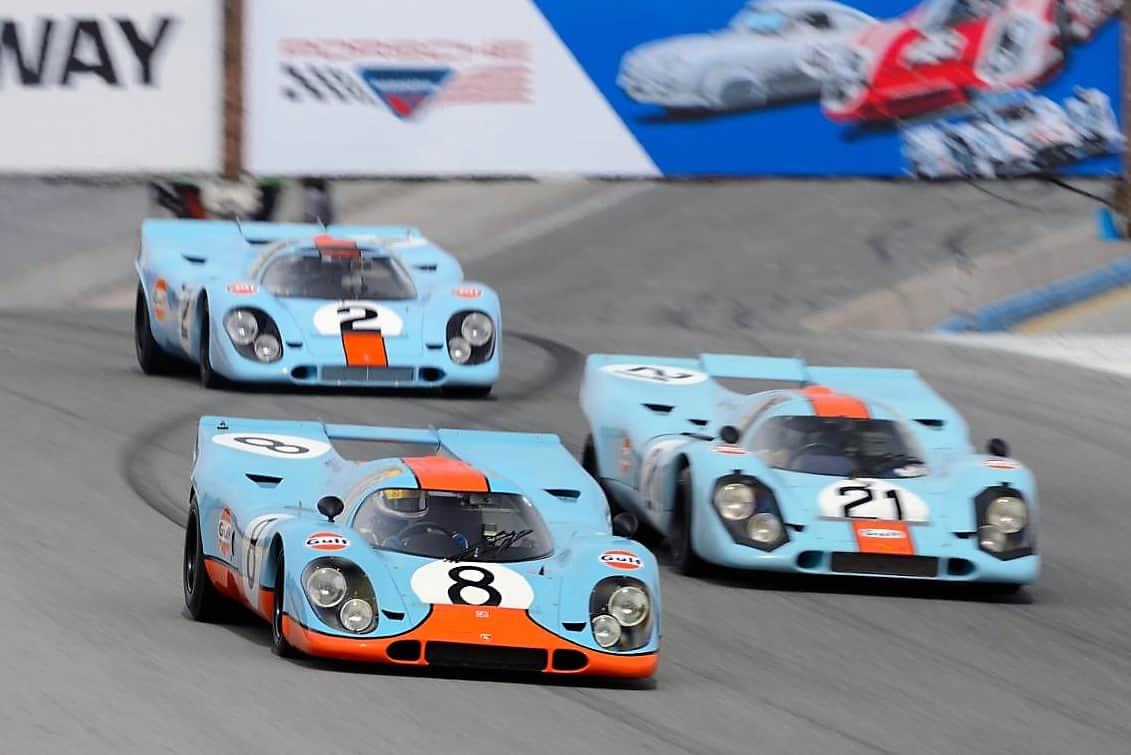


Excellent article!
Watched these great cars when they ran in the Can Am races of the early seventies. Bought my dram car a 911 Porsche in mid 1971, new, and kept it 14 years, and sold it for 3k more than I paid for it! I still have dreams I’m driving it, and Now Paint The 917 in water colors in my retirement…Jack Steven Johnsen